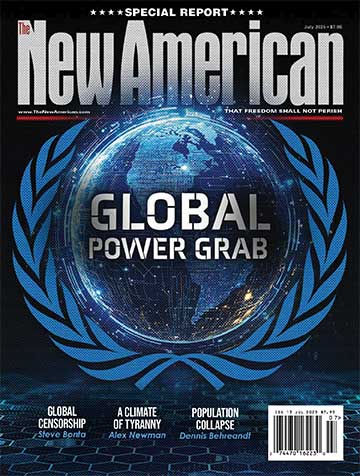
Fresh off breathless pronouncements that we’ve just experienced the “hottest year ever,” the People’s Republic of China has been experiencing some of the coldest temperatures ever recorded. It’s been so cold in the Chinese provinces of Shanxi, Hebei, and Liaoning that the communist nation’s leader, Xi Jinping, called for an “all-out” emergency response to the cold snap. Climate zealots, of course, are blaming the record cold on global warming.
The theory goes that accelerated warming in the Arctic is leading to a weakening of the polar vortex, a large area of low pressure and cold air surrounding the Earth’s polar regions. This vortex allegedly keeps the worst of the Arctic’s polar temperatures from heading south, but some scientists claim that global warming has weakened it to a point where polar cold is allowed to escape southward and affect the mid latitudes.
“Over the past 30 years, the Arctic Circle has experienced the fastest warming globally, known as the ‘Arctic amplification’ phenomenon,” said University of California, Irvine climatologist Shao Sun. “Warming leads to a weakening of the polar vortex in the Arctic, making it easier for cold air within the vortex to move southward, contributing to the occurrence of cold wave events.”
Even climate alarmists have been slow to jump on the global-warming-causes-cold-weather theory. In 2019 IPCC superstar Kevin Trenberth, who was the lead author of the United Nations Intergovernmental Panel on Climate Change (UN IPCC) reports of 1995, 2001, and 2007, poured cold water on the explanation.
“Frankly, it’s a stretch to make that link,” Trenberth told the Daily Caller.
“There is always cold air over the Arctic in the polar night and the question is whether it sits there, or it breaks out,” Trenberth said. “So, all this is in the realm of weather. Not climate.”
It’s hardly the first time that climate zealots have attempted to blame extreme cold on global warming. A 2018 outbreak of cold in the United States was similarly blamed on global warming — by none other than carbon-credit salesman Al Gore.
“It’s bitter cold in parts of the U.S., but climate scientist Dr. Michael Mann explains that’s exactly what we should expect from the climate crisis,” Gore said in the wake of a “bomb cyclone” that battered the Northeast.
Mann, of course, is the creator of the widely discredited “hockey stick” graph, which featured so prominently in Gore’s fantasy film An Inconvenient Truth.
Unfortunately, this winter’s polar vortex may not be done creating miserably cold conditions. China may simply be the first to experience Arctic cold this winter, as some scientists are predicting that the stratospheric phenomena may bring extreme cold to the U.S. and Europe in January.
“A strong Stratospheric Warming event is starting to appear in the forecast for January. It means a weakening or even collapse of the Polar Vortex and could bring a much-expected weather pattern change across the United States and Europe as we head deeper into Winter,” reads an article penned by Andrej Flis on the website Severe Weather Europe.
So, if you’ve been enjoying the relatively mild December we’ve been having in much of the United States, be prepared for it to change come January.
Imagine that — even predicting cold in January is somehow proof of climate change.
“Yes, yes, yes, of course, cold spells are caused by warming, just like everything else in the world. It’s the universal cause of everything bad and nothing good if you hear the false prophets of climate doom tell the narrative,” Dr. H. Sterling Burnett, a climatologist with the Heartland Institute, told The New American.
“There is only one problem — the facts, meaning real-world data don’t support it,” Burnett said.
“Polar vortices have been around since time immemorial, although they only first started being discussed about 150 years ago by scientists,” Burnett explained. “Since that time, such weather events have become neither more frequent, severe, or erratic. There is simply no trend showing that the pace, pattern, or severity of polar vortices have changed as the earth has modestly warmed.”
In the 1970s, the polar vortex was a sure sign that a new ice age was on the way.
“Telltale signs are everywhere — from the unexpected persistence and thickness of pack ice in the waters around Iceland to the southward migration of a warmth-loving creature like the armadillo from the Midwest. Since the 1940s the mean global temperature has dropped about 2.7° F,” claimed a Time magazine article from 1974.
Ever since the climate cult and their media allies re-branded so-called global warming into the catch-all term “climate change,” they’ve been looking for a way to blame any anomalous weather event — be it cold or hot, wet or dry — on climate change.





